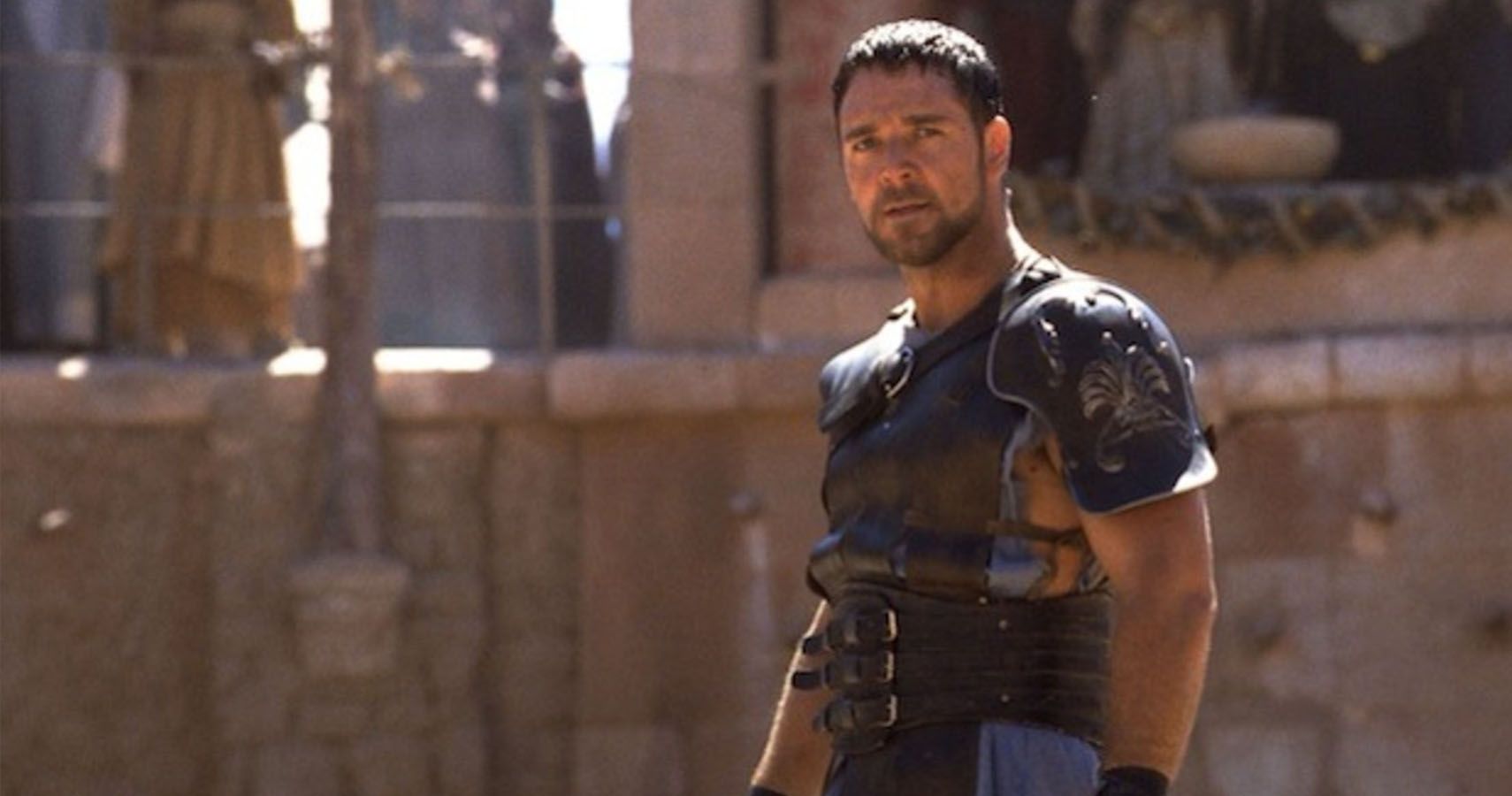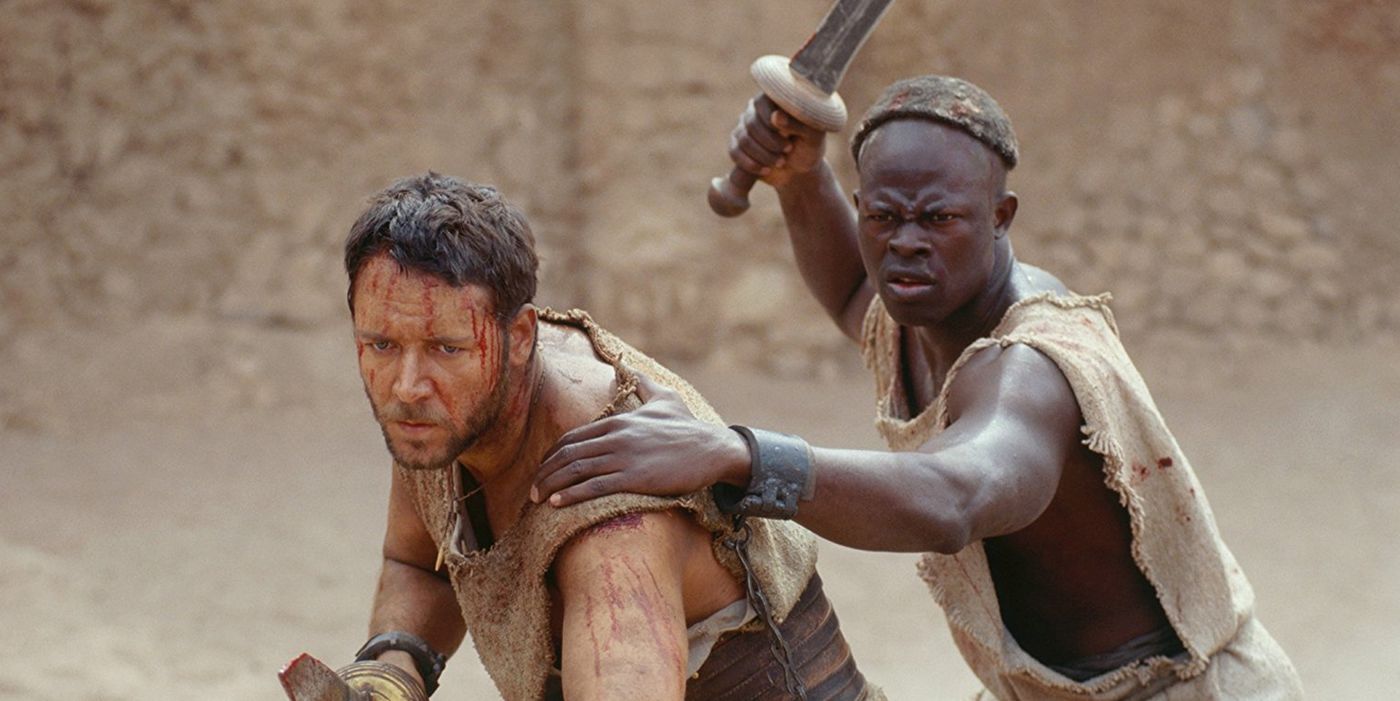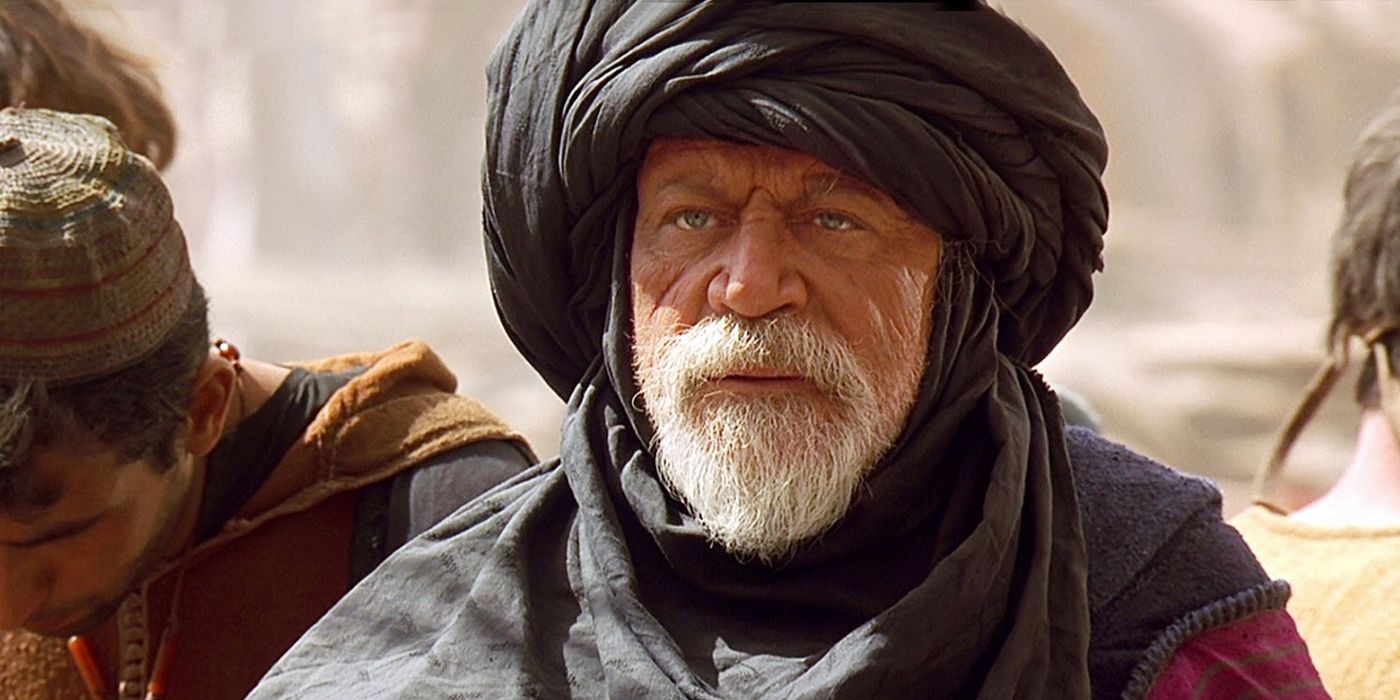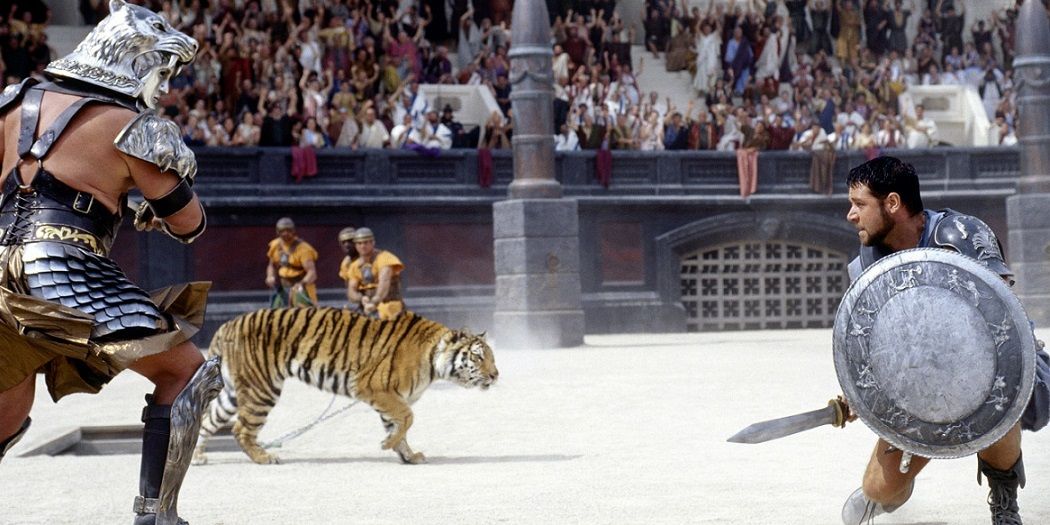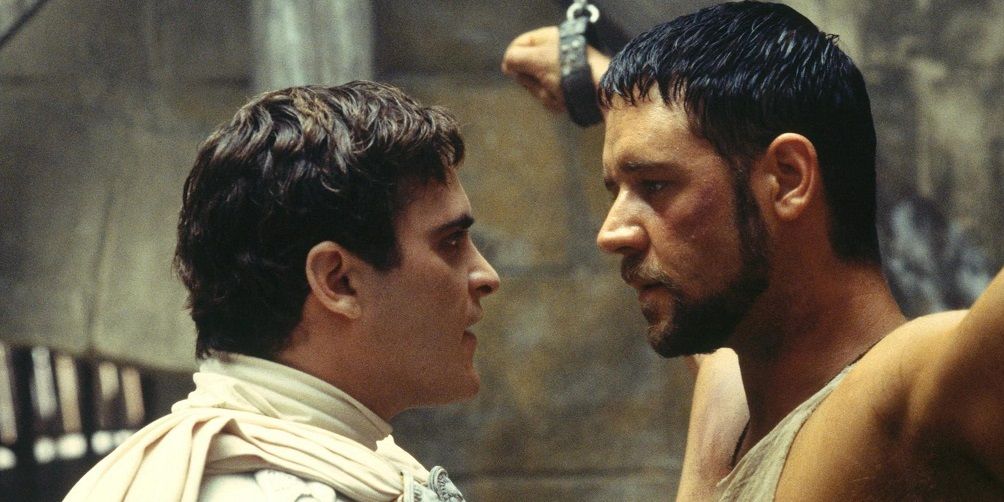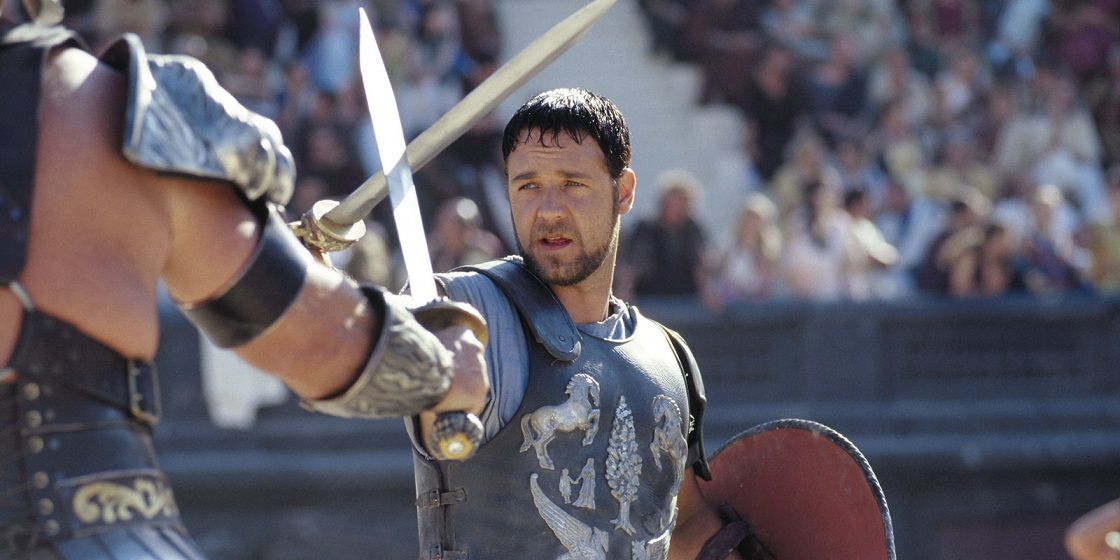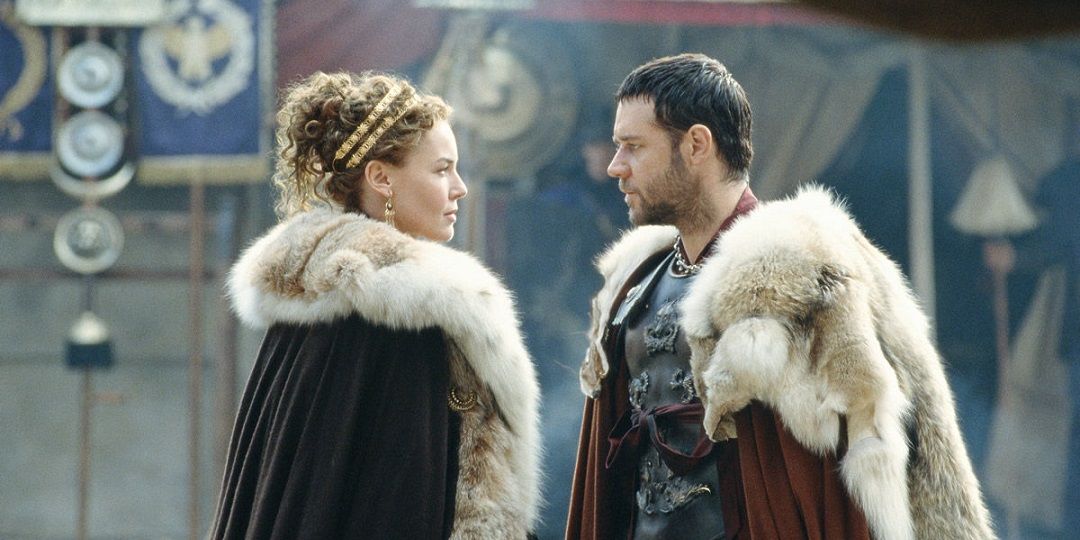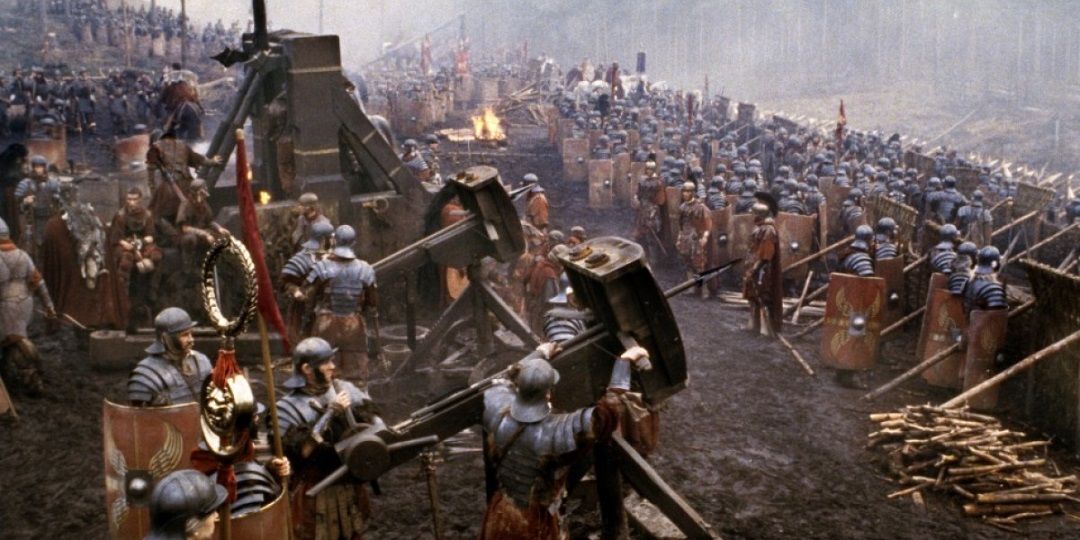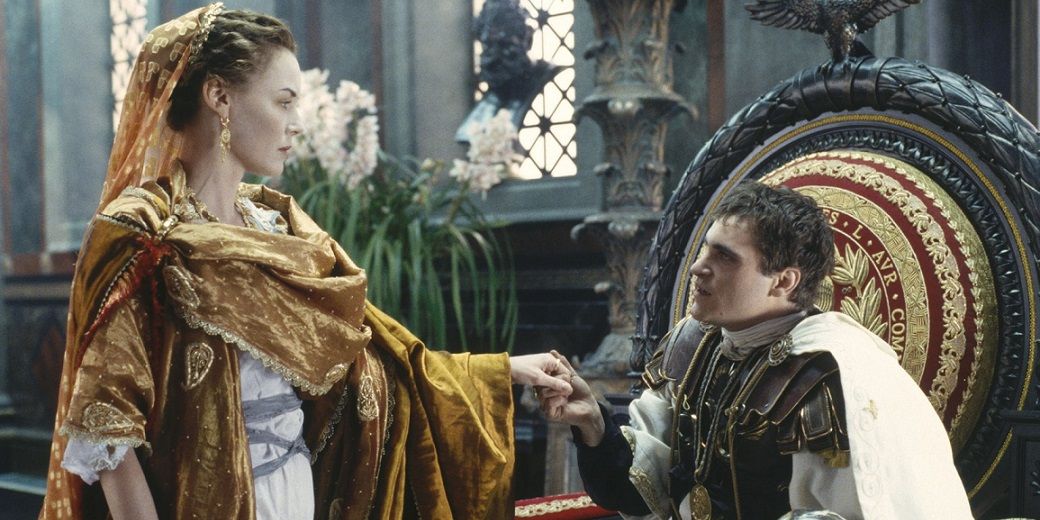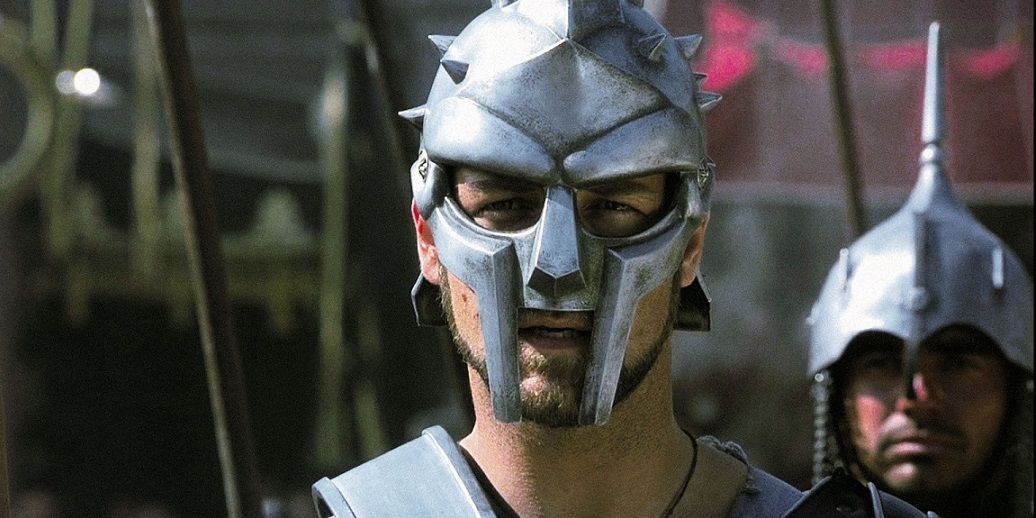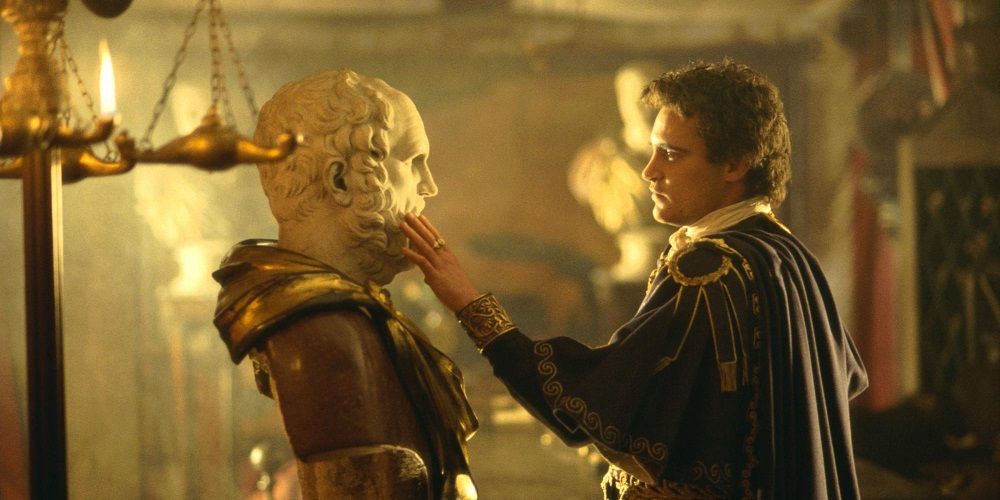Ridley Scott's epic period piece Gladiator was such a rousing success that it singlehandedly revived the somewhat dormant sword and sandal movie genre. The movie follows the story of Maximus, a heroic Roman general who falls out of favor with the emperor and endures an enormous amount of trials and tribulations in his quest to get revenge for the murder of his family. And like many Hollywood period pieces, this is a film that borrows a lot of inspiration from legitimate historical record and makes those bits and bobs of history into a tale worthy of a blockbuster budget.
Gladiator has cemented itself as a new classic in American cinema, and the top-notch production values in addition to the top-notch storytelling make this a film one that anyone can watch and enjoy. However, there are undoubtedly hundreds of tiny details in the film that the average viewer wouldn't even bother to notice, so here are ten details that even a fan of Gladiator was likely to miss.
A Real-Life Gladiator
Russell Crowe has a reputation as a great actor as well as a bit of a tough guy, and if his experience on the set of Gladiator is any indication then his reputation for being tough is well earned. Obviously even though it's acting, making a film can be pretty strenuous, especially if it's a physically demanding role like the role of Maximus.
So throughout the filming of Gladiator Russell Crowe suffered a litany of injuries, including an Achilles tendon injury, dislocated bicep tendons, a cracked hip bone, and a broken foot bone. And Crowe said that after a certain sword fight he lost sensation in his right forefinger for two years.
Missing A Cast Member
Gladiator was a movie that took a long time to shoot and had a lot of moving parts, and tragically one of the main stars of the film died three weeks before filming actually concluded. Oliver Reed, who played Proximo in the movie, died suddenly of a heart attack at the age of 61.
And his role was such an important one in the film that Ridley Scott actually had the option to reshoot all of the scenes with another actor, but Scott preferred to keep Reed in the movie. Therefore the script was partially rewritten, and a body double along with CGI was used to fill any holes that absolutely needed filling.
War Wounds
After the epic opening battle scene in Gladiator comes to its conclusion, Maximus is sporting some pretty obvious wounds on his face. It would come as no surprise if the filmmakers wanted to make him look a little worse for wear after going to war, but the injuries to Crowe's face were actually real.
Apparently he was on his horse and the horse got spooked, which resulted in Russell hitting some tree branches face first. So the cuts on his face were legit, and the stitches he needed to close up the wounds are actually visible in a few of the scenes.
The Infamous Thumbs Down
Whenever a film is being made about a culture and society that is literally thousands of years old it's an absolute guarantee that there will be a considerable number of anachronisms in the movie. However, there was one particular Roman tradition that Gladiator had to completely flip the script on, in a pretty literal sense.
Commodus makes liberal and dramatic use of his thumbs up and thumbs down. However, in ancient Rome, the thumbs down actually signified mercy whereas a thumbs up signified a fight to the death. But because the thumbs up and thumbs down signals are so firmly ingrained in our culture, the filmmakers decided not to confuse the hell out of the audience.
A Mix Of Extras
Gladiator is quite a spectacle of a film, and clearly when any film is attempting to recreate the absolutely over the top grandeur of the Colosseum it's going to require a lot of effort and a good helping of movie trickery on the side.
So when Maximus is fighting on the floor of the Colosseum, the movie did hire around two thousand extras to make the arena audience look crowded. But there were also quite a few CGI audience members edited in after the fact, and there were actually a significant number of cardboard cutout people used in the arena as well.
Some Old Western Easter Eggs
Now here's a detail that would be almost impossible to catch. Or at the very least, it's the kind of Easter egg that requires an extremely sharp eye for details, a pretty good knowledge of Latin, and a good recollection of classic Western trivia. So, the horses that adorn Maximus' breastplate are named Argento and Scatto, which are the Latin words for Silver and Trigger.
Roy Rogers famously rode a horse named Trigger, and the Lone Ranger's horse happened to be named Silver. I guess that someone working on the production for Gladiator was a big fan of old Westerns!
History Revised
When it comes to historical accuracy, Gladiator is a lot like a typical Hollywood period piece. Parts of it are fictional, and parts of it are grounded in reality. For instance, Maximus is a completely fictional character, but he is pretty clearly inspired by some real historical figures.
There are bits and pieces from many real life men that were thrown into Maximus' characterization, but the two biggest and most famous inspirations are Spartacus and Narcissus. Spartacus very famously led a slave revolt, and Narcissus is the man who actually killed the real Commodus. And Maximus was even originally named Narcissus in the earlier screenplay.
The Colossal Statue
So at a certain point in the film where Cicero is waiting outside of the Colosseum for Lucilla, he can be seen standing next to the foot of a gigantic unseen statue. The film never confirms it, but the statue is most likely the Colossus of Nero, a nearly hundred-foot tall statue that the notorious Emperor Nero had erected of himself outside of the Colosseum.
And that is in fact where the Colosseum borrows its name from, it's proper name was the Flavian Amphitheater. However, the incredibly conspicuous statue outside of it earned it the nickname of the Colosseum.
A Million Dollar Replica
Although a significant chunk of Gladiator takes place in Rome and many of the scenes take place in structures that actually still exist today, the bulk of the movie was filmed in the small island nation of Malta, and the production actually recreated a portion of the Colosseum for the sake of the movie.
The production replicated about a third of the real Colosseum and then added in the rest digitally. The replica was made up of plywood and plaster, it reportedly took months for the production team to actually construct, and according to some estimates, the structure took a million dollars to create.
Commodus' Advantage
Gladiator's lead character of Maximus is a completely invented man. However, the main villain Commodus was a very real Roman emperor. And a lot of what he does in the film are things that he did in his real life, including entering the gladiator arena and fighting himself.
He also fought against gladiators who were already injured, although Commodus did not know that himself. The men who would prepare the gladiators to go up against Commodus would actually stab the fighter in the back to weaken him before the fight, much like Commodus does to Maximus before they go head to head.

